Marawi, Philippines: Philippine authorities on Tuesday warned Islamist militants occupying parts of a southern city to surrender or die, as attack helicopters pounded the gunmen’s strongholds where up to 2,000 residents were feared trapped.
More than 100 people have been confirmed killed in the conflict, which began last week when gunmen waving black flags of the Islamic State (IS) group rampaged through the mostly Muslim-populated city of Marawi.
President Rodrigo Duterte declared martial law across the entire southern region of Mindanao, home to roughly 20 million people, in response to the crisis as he warned that local militant groups were uniting behind IS and becoming a major security threat.
But the militants, initially estimated by the nation’s defense chief to number just 100, have withstood eight days of intense air assaults and street-to-street combat, prompting the government’s threats on Tuesday.
“We call on the remaining terrorists to surrender while there is an opportunity,” military spokesman Brig.-General Restituto Padilla said in a statement.
“For the terrorists, not surrendering will mean their sure death.”
Padilla also told AFP the surrender call warning was aimed at limiting the loss of more lives and property.
Up to 2,000 residents were trapped in areas held by the militants, according to the local government, and the International Committee of the Red Cross had voiced alarm they would be caught in the bombing raids or crossfire.
The militants also took a priest and up to 14 other people hostage at the start of the crisis, and their fate remains unknown.
The militants released a video in which they threatened to kill the hostages, according to a report by the SITE Intelligence Group on Monday that could not be verified.
And clashes on Tuesday appeared to be as intense as previous days, according to an AFP reporter who followed security forces who had to run from militants’ sniper fire coming from nearby buildings.
Military helicopters fired rockets repeatedly on that part of the city on Tuesday morning, and black smoke rose from the buildings that were apparently hit.
The gunmen were being backed by foreign fighters, including Malaysians, Indonesians and Singaporeans, authorities said.
The militants had killed at least 19 civilians, while 20 security forces and 65 gunmen had died, according to the military.
The death toll looked likely to climb, with soldiers reporting the smell of corpses in a public market still being held by the militants.
Martin Thalmann, deputy head of the ICRC’s Philippine delegation who is in Marawi, also told AFP on Monday his staff had received reports from people trapped inside the militants’ areas that residents had died from stray bullets and sickness.
The violence began when dozens of gunmen went on a rampage in response to an attempt by security forces to arrest Isnilon Hapilon, a veteran Filipino militant regarded as the local leader of IS.
Hapilon, a senior member of the Abu Sayyaf kidnap-for-ransom gang, is on the US government’s list of most-wanted terrorists.
He was being protected in Marawi by the local Maute group, which has pledged allegiance to IS.
Hapilon, the Maute and other militants had been planning a major attack on Marawi, one of the few Islamic cities in the mainly Catholic Philippines with a population of 200,000 people, armed forces chief General Eduardo Ano said.
He said they were planning to launch the assault to coincide with the Muslim holy month of Ramadan, which began on the weekend, but the raid on Hapilon triggered them to attack earlier, according to Ano.
Muslim separatist rebellion in the southern Philippines has claimed more than 120,000 lives since the 1970s.
The main Muslim rebel groups have signed accords with the government aimed at forging a final peace, giving up their separatist ambitions in return for autonomy.
The Maute, the Abu Sayyaf and other hard-line groups are not interested in negotiating and have in recent years looked to IS to help them.
The Marawi violence was intended to highlight their credentials to IS, security analysts have said.
Duterte said Saturday he was prepared to enforce martial law for as long as was necessary to end the terrorist threat.
Philippines warns Islamist militants to surrender or die
Philippines warns Islamist militants to surrender or die

Pakistan’s finance minister discusses Panda Bond launch with China’s central bank governor in Beijing

- The bonds are denominated in China’s currency and will provide Pakistan access to Chinese capital markets
- The finance minister also discusses the next CPEC stage, expected to emphasize business-to-business ties
ISLAMABAD: Federal Minister for Finance and Revenue Muhammad Aurangzeb briefed Governor of People’s Bank of China (PBoC) Pan Gongsheng on Pakistan’s plan to launch Panda Bonds during a meeting in Beijing on Friday in which they discussed a wide range of economic issues.
Panda Bonds are sold in China’s domestic market and are denominated in its currency, though they are issued by non-Chinese entities. Pakistan plans to issue these bonds to diversify its funding sources and strengthen its foreign exchange reserves by attracting Chinese investors.
According to local media reports, the initial issuance is expected to raise between $250 million and $300 million, helping Pakistan improve its financial stability amid economic challenges like high inflation and declining forex reserves.
The minister spoke about the government’s economic policy during the meeting in which reprentatives of other financial institutions were also present.
“Underlining Pakistan’s plan to launch Panda Bonds, Minister for Finance briefed PBoC and other Financial Institutions about the steps taken so far and sought cooperation of the Chinese institutional investors in the capital market to seek benefit from the pro-business policies of the new [Pakistani] Government,” said a statement issued by the finance division after the meeting.
The Pakistani official also highlighted his country’s improving macroeconomic indicators, reforms in tax collection and energy sector and privatization of loss-making state-owned enterprises.
He applauded Chinese President Xi Jinping’s Belt and Road Initiative while reviewing the progress of its flagship China-Pakistan Economic Corridor (CPEC) project.
The minister noted the next phase of CPEC would focus on strengthening business-to-business cooperation, with private sector playing the central role in the development and economic growth.
He arrived in China on Thursday to open talks on power sector structural reforms suggested by the International Monetary Fund, two government sources quoted by Reuters.
Aurangzeb is also accompanied by Pakistan’s Power Minster Awais Ahmed Khan Leghari.
According to Reuters, both officials are expected to take up several proposals with the Chinese side, including reprofiling of nearly $15 billion energy sector debt.
Aqabat Shaar: Iconic Saudi mountain road a lifeline for Asir’s rugged beauty

- The road through Aqabat Shaar connects the highlands of Sarat Asir with the coastal plain of Tihama
- It is a vital conduit for travel, commerce, and tourism, connecting communities while showcasing the natural splendor of the region
RIYADH: Nestled in the heart of Saudi Arabia's southwestern region of Asir, Aqabat Shaar is one of the most iconic highways, celebrated for its breathtaking natural scenery and vital tourist attractions.
This mountainous area, known for its rugged terrain, used to pose significant challenges to access and mobility, which led to the creation of a road that has become indispensable to residents and visitors alike, linking the region to neighboring areas and governorates.
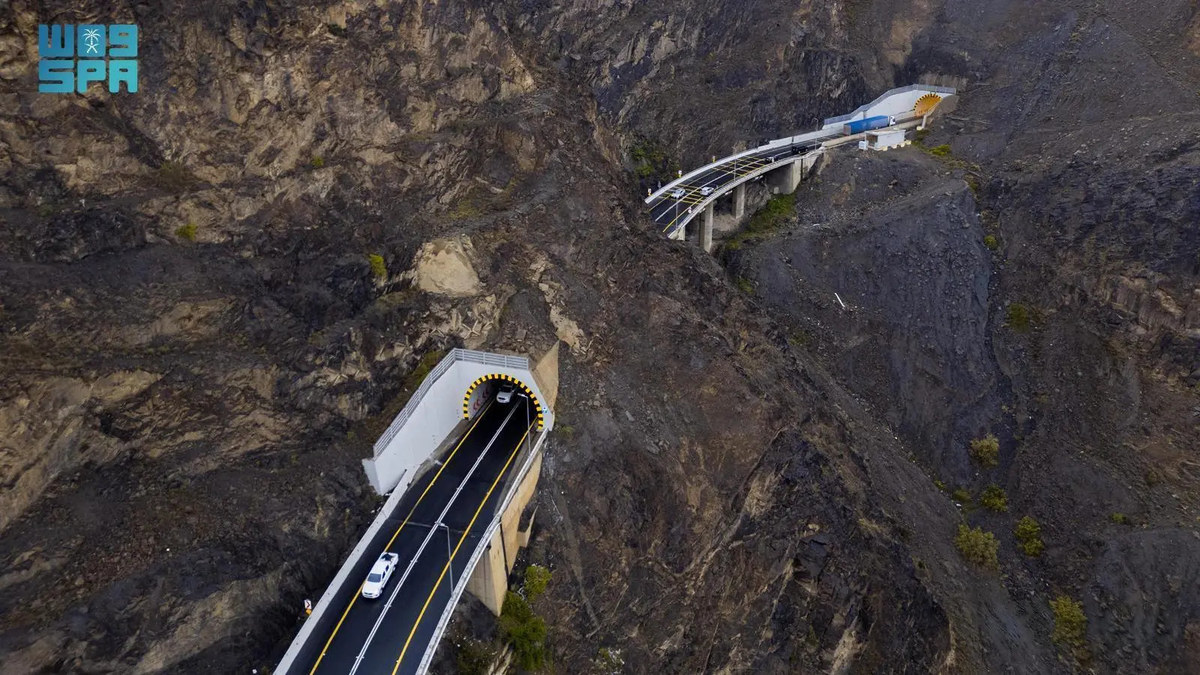
A mere 23 kilometers from Abha city, the road through Aqabat Shaar connects the highlands of Sarat Asir with the coastal plain of Tihama. This crucial artery not only reduces travel time, but also plays a pivotal role in bolstering tourism in the region. Furthermore, it enhances the Kingdom’s standing as a global logistics hub by facilitating the seamless movement of trucks transporting a wide array of goods.
The construction of Aqabat Shaar began over 40 years ago, under the reign of the late King Fahd bin Abdulaziz. This monumental project involved cutting through solid rock, creating 11 tunnels, and erecting 32 bridges, resulting in a road approximately 14 kilometers long. The endeavor was a marvel of engineering at the time, designed to navigate the challenging topography and ensure reliable access.
The road recently underwent significant development to enhance its utility and safety. The Roads General Authority spearheaded a comprehensive maintenance project incorporating the latest international technologies and standards. This effort entailed a temporary closure of the road, which reopened last year to much acclaim.
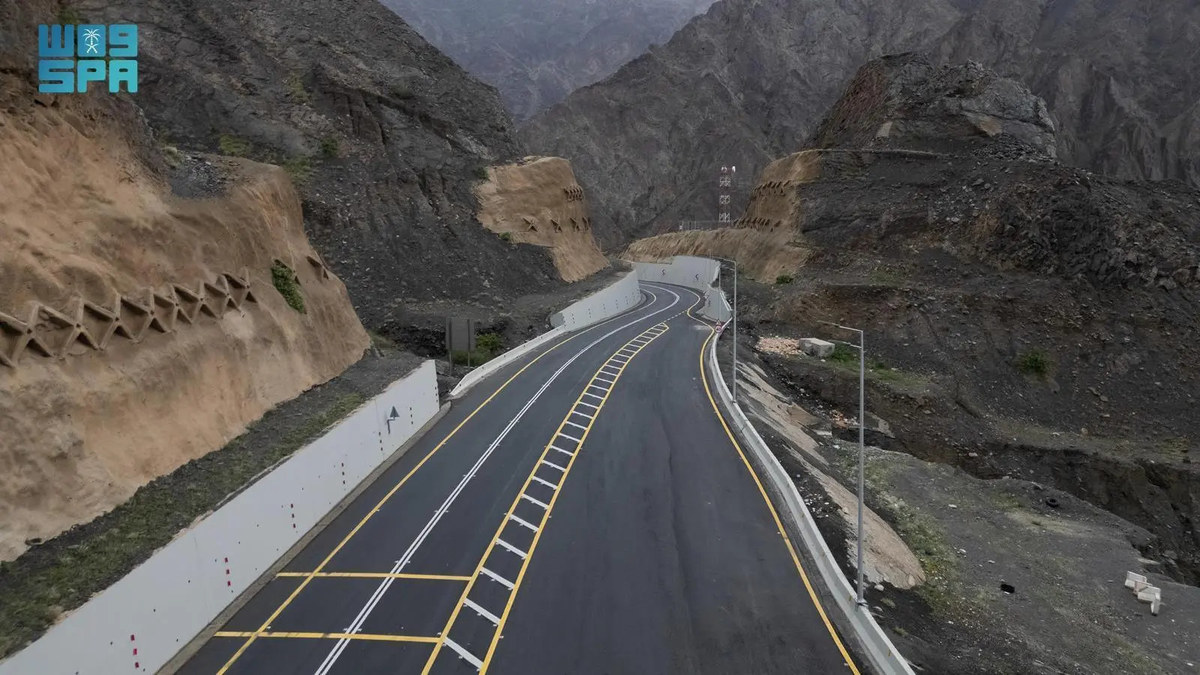
The recent maintenance work on Aqabat Shaar focused on achieving the highest standards of quality and safety. Enhancements included the installation of modern lighting, clear road markings, informative signs, and warning vibrations. Additionally, concrete barriers were erected to improve road safety, ensuring that the road meets the increasing demands of the region’s expanding network.
Aqabat Shaar is not just a road; it is a testament to human ingenuity and determination carving a path through some of the most formidable terrain in Asir. It is a vital conduit for travel, commerce, and tourism that serves and connects communities while showcasing the natural splendor of the region.
As it evolves with ongoing developments, Aqabat Shaar remains a beacon of progress, illuminating the way forward for Asir's dynamic future.
Pakistani craftsman strives to preserve antiques in a dying industry

- Based in Rawalpindi’s Bhabra Bazaar, Mohammad Shakeel Abbasi has restored centuries-old bugles, decorative dishes, jars, vases and teapots
- Artefacts at Abbasi’s shop sell for anywhere between $40 to $1,000, many collectors place orders after coming across antiques online
RAWALPINDI: Antiquarian Mohammad Shakeel Abbasi pulled open the shutter of his shop in the Pakistani city of Rawalpindi to reveal a small space choke-full of bugles, decorative dishes, jars, vases, teapots, bowls and plates inscribed with ancient motifs.
Located in the historic Bhabra Bazaar, Abbasi’s shop, lit up by a few naked light bulbs, is among a dwindling number of antique restoration workshops in the garrison city. The 71-year-old inherited the craft from his forefathers and set up the shop nearly 40 years ago in 1985, now employing three workers who help him repair, polish and electroplate copper and brass relics to be sold to customers in Pakistan and abroad.
“Since then [1985] I’ve been in this business,” Abbasi told Arab News at his shop earlier this month as he dusted an antique bugle. “We purchase antique items and repair them and polish them and then sell them to our dedicated customers.”
Buyers reach out to him from as far as the UK and US, he added.
Abbasi mainly sources copper and brass items from households and scrap dealers, who scour heaps of imported items that first land at the port in Pakistan’s commercial hub of Karachi.
“The traders who buy them, they contact us,” the craftsman said. “They are broken items, and we have to repair them and polish and recondition them to the extent that you cannot even tell that this was an old item.”
Antiques at Abbasi’s shop can sell for anywhere between $40 to $1,000, but the art of antique preservation and restoration is now at risk of being lost as the new generation is opting out of the profession.
“The problem is that the craftsmen who used to work [on antiques] are no longer available. Not a lot of attention is given to this craft, The government has also not prioritized training craftsmen,” Abbasi lamented.
“Antiquarians quit the business due to lack of business, and some passed away and the new generation isn’t interested in this line of work.”
Customers and collectors who frequent Abbasi’s shop often place orders after coming across antique items on the Internet.
“I have liked an antiques page [on social media]. I searched for an item on the Internet and told him [Abbasi] about it and he arranged it for me,” Dr. Ahmad Ali, an antique collector, told Arab News. “It was the same thing that I had ordered.”
Shamas Rehman, who has been a collector for over two decades, praised Abbasi’s fine craftsmanship.
“My forefathers were collecting antiques, it was their hobby, and now I have been collecting them since 2003,” he said, “and from wherever we can get the antiques, we buy them, collect them and place them in our homes, and this goes on.”
South Korea expresses regret after its athletes introduced as North Korea at Olympics opening ceremony

- South Korea’s delegation includes 143 athletes competing in 21 events
- North Korea, which is returning to the Games for the first time since Rio 2016, has sent 16 athletes
SEOUL: South Korea expressed regret that its delegation of athletes at the Paris Olympics opening ceremony on Friday was introduced as from rival North Korea and has demanded assurances from organizers the mistake will not happen again.
As the boat carrying South Korean athletes passed on the Seine, the announcer introduced them as the “Democratic People’s Republic of Korea” — the official name of North Korea — in French and English.
The announcer used the same introduction when the North Korean delegation passed.

South Korea’s vice minister for sports and culture, Jang Mi-ran, who was in Paris, had requested a meeting with International Olympics Committee President Thomas Bach, the ministry said in a statement.
“We express regret that the country was introduced as North Korea at the opening ceremony of the Paris Olympic Games when the athletes of the Republic of Korea were entering,” it said.
South Korea’s National Olympic Committee immediately referred the incident to the Games’ organizers and requested that the error will not be repeated.
South Korea’s delegation includes 143 athletes competing in 21 events. North Korea, which is returning to the Games for the first time since Rio 2016, has sent 16 athletes.
How climate change is exacerbating food insecurity, with dangerous consequences for import-reliant Middle East

- UN report show nations are falling well short of achieving the Sustainable Development Goal of eliminating hunger by 2030
- FAO expert warns that climate shocks could lead to more conflict in the region over limited access to water and resources
RIYADH: Global food insecurity is far worse than previously thought. That is the conclusion of the State of Food Security and Nutrition in the World 2024 report published this week by a coalition of UN entities, which found that efforts to tackle undernourishment had suffered serious setbacks.
As countries across the world fall significantly short of achieving the second UN Sustainable Development Goal of “zero hunger” by 2030, the report notes that climate change is increasingly recognized as a pivotal factor exacerbating hunger and food insecurity.

As a major food importer, the Middle East and North Africa region is considered especially vulnerable to climate-induced crop failures in source nations and the resulting imposition of protectionist tariffs and fluctuations in commodity prices.
“Climate change is a driver of food insecurity for the Middle East, where both the global shock and the local shock matter,” David Laborde, director of the Agrifood Economics and Policy Division at the Food and Agriculture Organization of the UN, told Arab News.
“Now, especially for the Middle East, I think that the global angle is important because the Middle East is importing a lot of food. Even if you don’t have a (climate) shock at home, if you don’t have a drought or flood at home — if it’s happened in Pakistan, if it’s happened in India, if it’s happened in Canada — the Middle East will feel it.”
Opinion
This section contains relevant reference points, placed in (Opinion field)
The State of Food Security and Nutrition in the World report has been compiled annually since 1999 by FAO, the International Fund for Agricultural Development, the UN Children’s Fund, the World Food Programme, and the World Health Organization to monitor global progress toward ending hunger.
During a recent event at the UN headquarters in New York, the report’s authors emphasized the urgent need for creative and fair solutions to address the financial shortfall for helping those nations experiencing severe hunger and malnutrition made worse by climate change.
In addition to climate change, the report found that factors like conflict and economic downturns are becoming increasingly frequent and severe, impacting the affordability of a healthy diet, unhealthy food environments, and inequality.
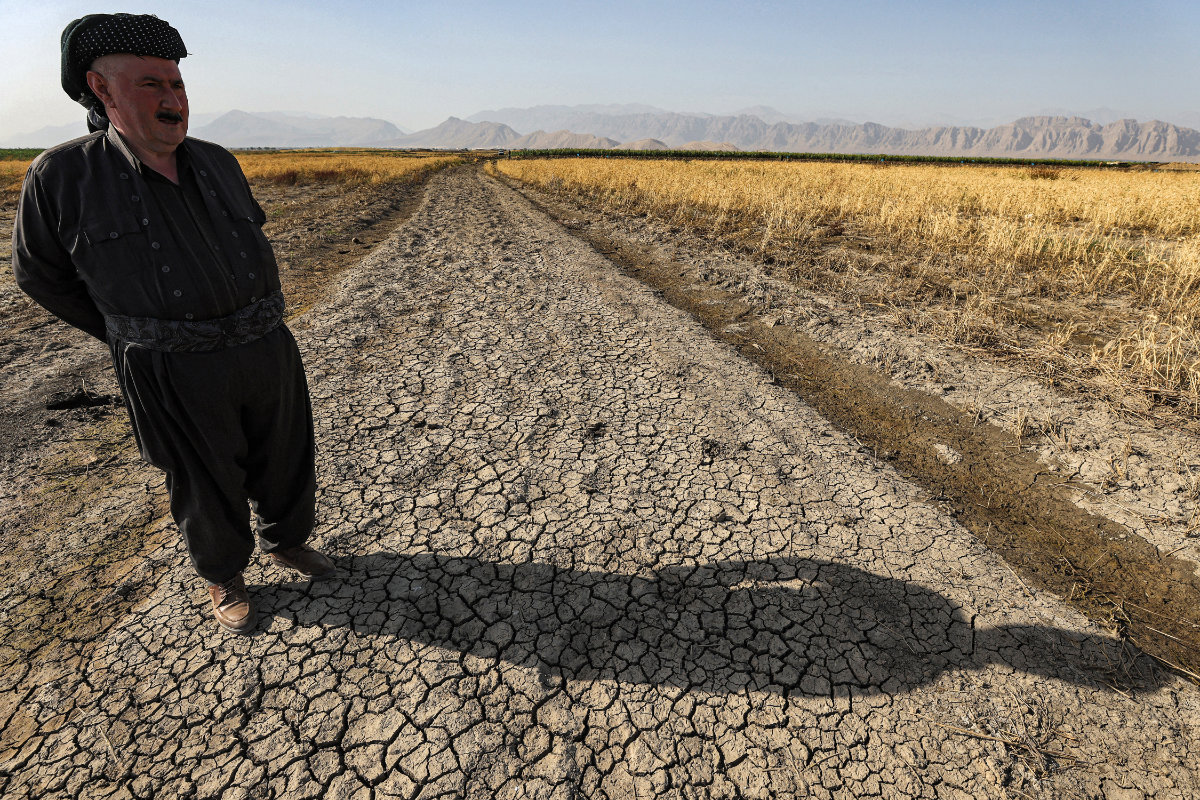
Indeed, food insecurity and malnutrition are intensifying due to persistent food price inflation, which has undermined economic progress globally.
“There is also an indirect effect that we should not neglect — how climate shock interacts with conflict,” said Laborde.
In North Africa, for example, negative climate shocks can lead to more conflict, “either because people start to compete for natural resources, access to water, or just because you may also have some people in your area that have nothing else to do,” he said.
“There are no jobs, they cannot work on their farm, and so they can join insurgencies or other elements.”
DID YOUKNOW?
Up to 757 million people endured hunger in 2023 — the equivalent of one in 11 worldwide and one in five in Africa.
Global prevalence of food insecurity has remained unchanged for three consecutive years, despite progress in Latin America.
There has been some improvement in the global prevalence of stunting and wasting among children under five.
In late 2021, G20 countries pledged to take $100 billion worth of unused Special Drawing Rights, held in the central banks of high-income countries and allocate them to middle- and low-income countries.
Since then, however, this pledged amount has fallen $13 billion short, with those countries with the worst economic conditions receiving less than 1 percent of this support.
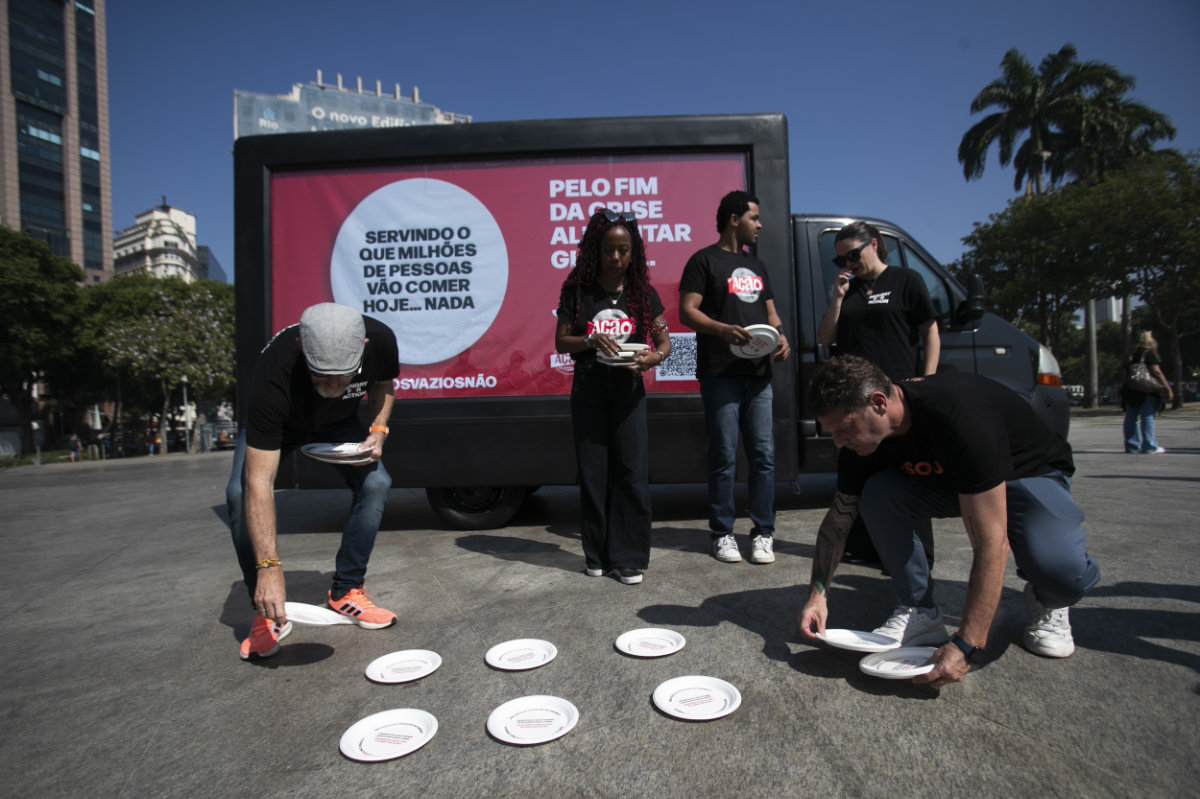
Saudi Arabia is one of the countries that has exceeded its 20 percent pledge, alongside Australia, Canada, China, France, and Japan, while others have failed to reach 10 percent or have ceased engagement altogether.
“Saudi Arabia is a very large state in the Middle East, so what they do is important, but also they have a financial capacity that many other countries don’t,” said Laborde.
“It can be through their SDRs. It can also be through their sovereign fund because where you invest matters and how you invest matters to make the world more sustainable. So, I will say yes, prioritizing investment in low- and middle-income countries on food and security and nutrition-related programs can be important.
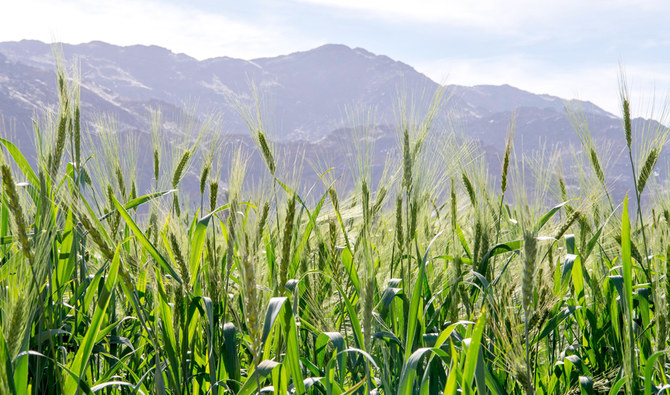
Although the prevalence of undernourishment in Saudi Arabia has fallen in recent years, the report shows that the rate of stunting in children has actually increased by 1.4 percent in the past 10 years.
There has also been an increase in the rates of overweight children, obesity, and anemia in women as the population continues to grow. In this sense, it is not so much a lack of food but a dearth of healthy eating habits.
“Saudi Arabia is a good example where I would say traditional hunger and the lack of food … become less and less a problem, but other forms of malnutrition become actually what is important,” said Laborde.

In 2023, some 2.33 billion people worldwide faced moderate or severe food insecurity, and one in 11 people faced hunger, made worse by various factors such as economic decline and climate change.
The affordability of healthy diets is also a critical issue, particularly in low-income countries where more than 71 percent of the population cannot afford adequate nutrition.
In countries like Saudi Arabia where overeating is a rising issue, Laborde suggests that proper investment in nutrition and health education as well as policy adaptation may be the way to go.
While the Kingdom continues to extend support to countries in crisis, including Palestine, Sudan, and Yemen, through its humanitarian arm KSrelief, these states continue to grapple with dire conditions. Gaza in particular has suffered as a result of the war with Israel.
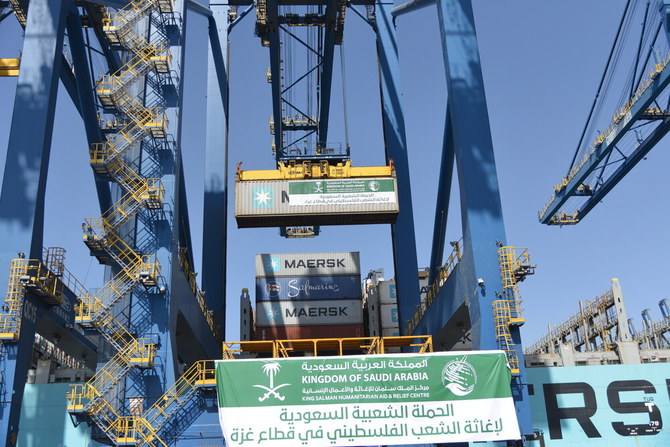
“Even before the beginning of the conflict, especially at the end of last year, the situation in Palestine was complicated, both in terms of agricultural system (and) density of population. There was already a problem of malnutrition,” said Laborde.
“Now, something that is true everywhere, in Sudan, in Yemen, in Palestine, when you start to add conflict and military operations, the population suffers a lot because you can actually destroy production. You destroy access to water. But people also cannot go to the grocery shop when the truck or the ship bringing food is disrupted.”
While Palestine and Sudan are the extreme cases, there are still approximately 733 million people worldwide facing hunger, marking a continuation of the high levels observed over the past three years.

“On the ground, we work with the World Food Programme (and) with other organizations, aimed at bringing food to the people in need in Palestine,” Laborde said of FAO’s work. “Before the conflict and after, we will also be working on rebuilding things that need to be rebuilt. But without peace, there are limited things we can do.”
FAO helps food-insecure nations by bringing better seeds, animals, technologies, and irrigation solutions to develop production systems, while also working to protect livestock from pests and disease by providing veterinary services and creating incentives for countries to adopt better policies.
The report’s projections for 2030 suggest that around 582 million people will continue to suffer from chronic undernourishment, half of them in Africa. This mirrors levels observed in 2015 when the SDGs were adopted, indicating a plateau in progress.
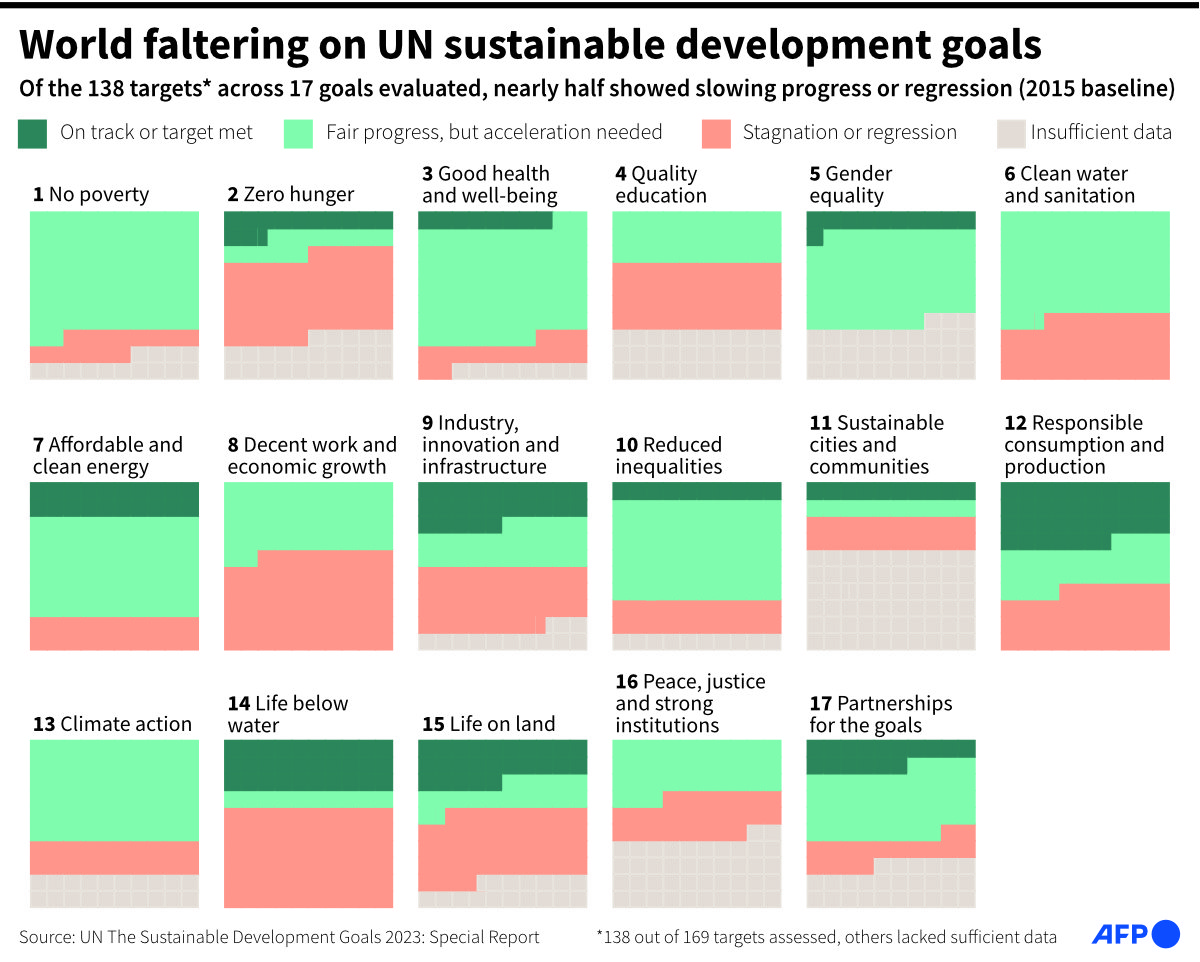
The report emphasizes the need to create better systems of financial distribution as per this year’s theme: “Financing to end hunger, food insecurity and all forms of malnutrition.”
“In 2022, there were a lot of headlines about global hunger, but today, this has more or less disappeared when the numbers and the people that are hungry have not disappeared,” said Laborde, referring to the detrimental impact of the war in Ukraine on world food prices.
“We have to say that we are not delivering on the promises that policymakers have made. The world today produces enough food, so it’s much more about how we distribute it, how we give access. It’s a man-made problem, and so it should be a man-made solution.”















